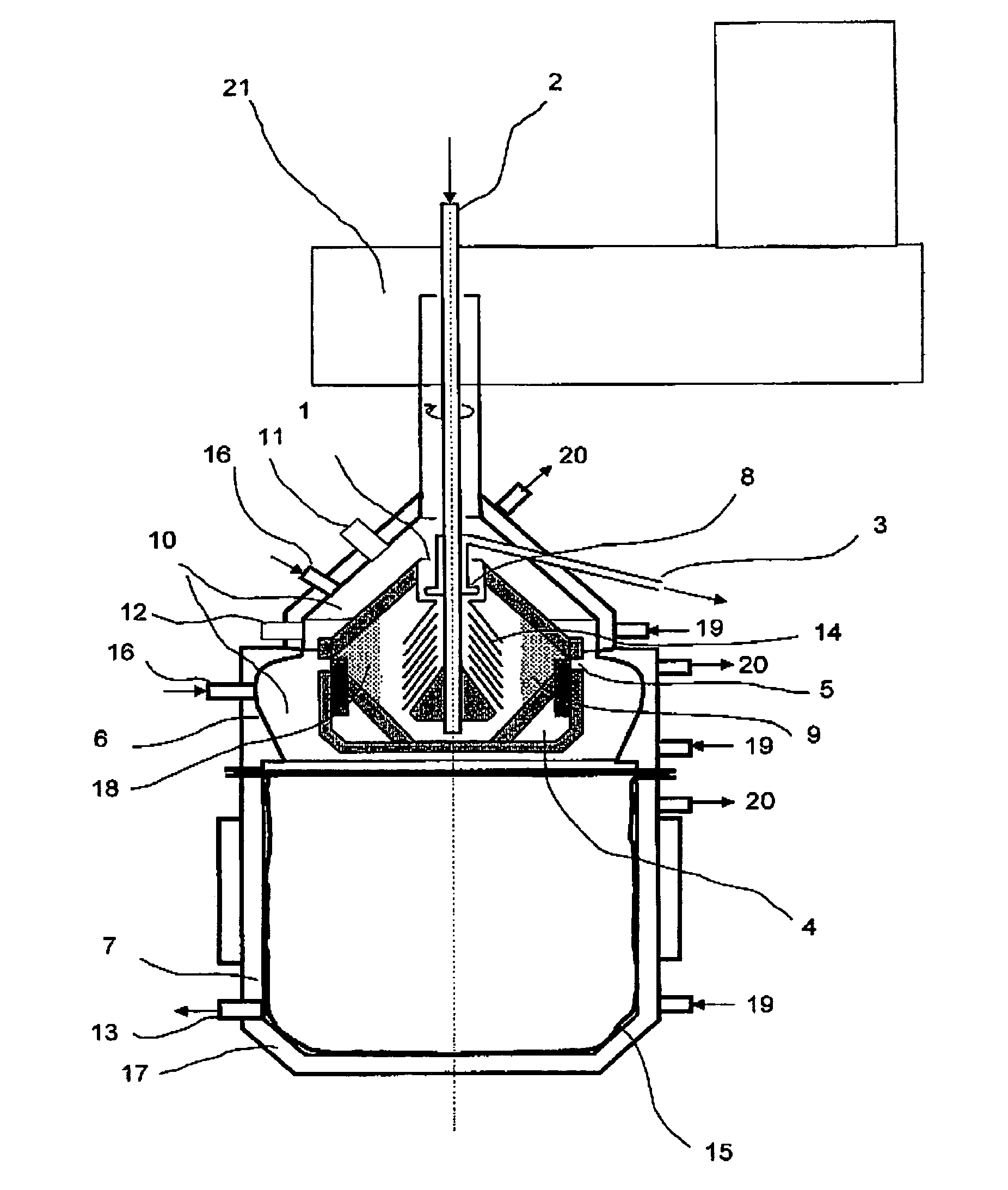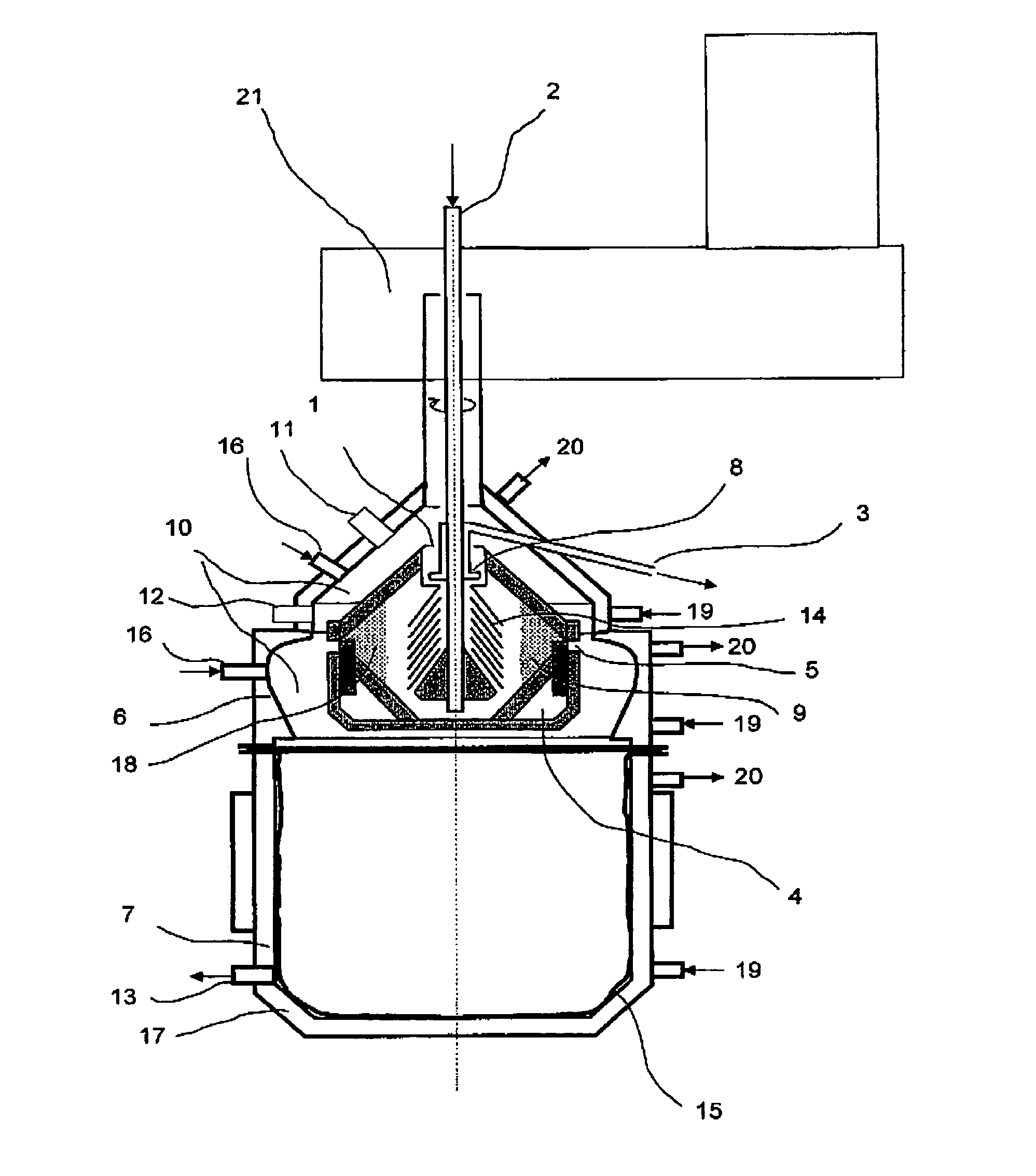Method for the separation of blood plasma particles from a blood plasma suspension
a technology of blood plasma particles and blood plasma suspension, which is applied in the direction of separation processes, centrifuges, instruments, etc., can solve the problems of inability to cool down filters used according to the prior art, complicated manual handling, and inability to meet the requirements of operation staff and products, etc., to achieve cost-effectiveness, reduce the speed of rotation, and increase the equipment capacity
- Summary
- Abstract
- Description
- Claims
- Application Information
AI Technical Summary
Benefits of technology
Problems solved by technology
Method used
Image
Examples
example 1
[0046]With the described method, it was possible for 22.6 kg of a blood plasma protein to be separated and discharged fully automatically from the drum in 5 cycles within 70 minutes. About 30% of this time was taken up by the separation of the blood plasma particles in method step I. Between method steps I and II, a secondary centrifuging phase of 5 minutes was performed in order to further compact the blood plasma sediment separated in the drum.
[0047]The drum speed during separation of the blood plasma particles (method step I) was 7000 l / min. Before the start of method step I, the drum 4 was precooled by feeding in a water / ethanol mixture as precooling liquid with a temperature in the range of −5° C. to −10° C. This precooling was assisted by cooling the jacket of the housing 1 (−10° C.), of the deflector ring 6 (−20° C.) and of the collecting containers 7 (−20° C.) and by feeding in liquid nitrogen at housing 1 and deflector ring 6. This cooling was also maintained for subsequent...
example 2
[0049]In another example, another blood plasma fraction was separated off. In this case, it was possible for 16.3 kg of blood plasma sediment to be separated off and removed fully automatically in 4 cycles within 81 minutes. Ca. 22% of the time was taken up by the separation of the blood plasma particles in method step I. Between method steps I and II, a secondary centrifuging phase of in each case 15 minutes was performed in order to compact the blood plasma sediment separated off in the drum.
[0050]The drum speed during separation of the blood plasma particles was 7000 l / min in this case too. Before the start of method step I, the drum 4 was precooled by feeding in a water / ethanol mixture as precooling liquid via the admission line 2 with a temperature in the range of −10° C. to −13° C. The jacket cooling of the structural parts surrounding the drum 4, namely housing 1, deflector ring 6 and collecting container 7, was in the range of −17° C. to −23° C. The cooling was once again as...
PUM
| Property | Measurement | Unit |
|---|---|---|
| temperature | aaaaa | aaaaa |
| temperature | aaaaa | aaaaa |
| temperature | aaaaa | aaaaa |
Abstract
Description
Claims
Application Information
 Login to View More
Login to View More - R&D
- Intellectual Property
- Life Sciences
- Materials
- Tech Scout
- Unparalleled Data Quality
- Higher Quality Content
- 60% Fewer Hallucinations
Browse by: Latest US Patents, China's latest patents, Technical Efficacy Thesaurus, Application Domain, Technology Topic, Popular Technical Reports.
© 2025 PatSnap. All rights reserved.Legal|Privacy policy|Modern Slavery Act Transparency Statement|Sitemap|About US| Contact US: help@patsnap.com


